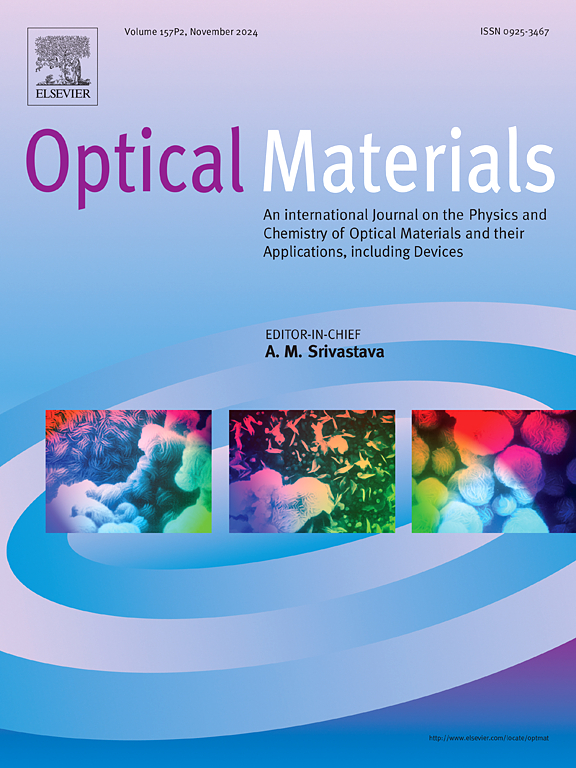Synthesis of Graphite/SiOC composites film on silicon substrate: Insights into chemical composition, structural, morphological, electrical and optoelectronic properties
IF 3.8
3区 材料科学
Q2 MATERIALS SCIENCE, MULTIDISCIPLINARY
引用次数: 0
Abstract
Graphite/SiOC composite (GSOC) thin films were synthesized on silicon substrates using an innovative “toast sandwich” method, where a silicon–graphite precursor mixture was deposited between two Si wafers and thermally treated at 350 °C to promote film adherence. The precursor solution was prepared directly from elemental silicon and graphite powders. A key challenge addressed in this work is the poor adhesion of polymer-derived SiOC on Si substrates—stemming from weak interfacial bonding strength and surface energy mismatch—which conventional deposition methods struggle to overcome. Our approach provides a simple and effective way to enhance film–substrate contact during thermal processing. The as-deposited GSOC films were further annealed at 1200 °C for 4 h, enabling compositional evolution and phase transformation. Structural, chemical, and functional properties were investigated using XRD, FTIR, XPS, AES, UPS, REELS, PL, and AFM. XRD confirmed the amorphous nature of the as-deposited film, while XPS and FTIR revealed the coexistence of Si–C and graphitic bonds. Annealing induced surface oxidation, leading to a transition from a carbon-rich (SiC-like) to an oxygen-rich (SiO2-like) structure. REELS analysis indicated a bandgap widening from 8.1 eV (as-deposited) to 9.5 eV (annealed). UPS measurements showed a decrease in work function from 5.88 eV to 5.00 eV, and a shift in the Fermi level position from 3.72 eV to 5.56 eV (EF–EVBM). These changes reflect a transition from conductive to insulating behavior, as confirmed by Hall measurements showing a conductivity drop from 0.54 S/cm to 3.48 × 10−6 S/cm and carrier density reduction from 7.27 × 1017 to 2.64 × 1012 cm−3. Photoluminescence analysis revealed SiC-like visible emission in the as-deposited film, while the annealed film demonstrated UV and violet emissions, suggesting potential use in advanced optoelectronic applications, particularly within the warm violet spectral range.

硅衬底上石墨/SiOC复合薄膜的合成:化学成分、结构、形态、电学和光电子性能的研究
石墨/硅基复合材料(GSOC)薄膜采用创新的“吐司三明治”方法在硅衬底上合成,其中硅-石墨前驱体混合物沉积在两片硅晶片之间,并在350℃下进行热处理以促进薄膜的粘附性。前驱体溶液由单质硅粉和石墨粉直接制备。在这项工作中解决的一个关键挑战是聚合物衍生的SiOC在Si衬底上的附着力差-源于弱的界面结合强度和表面能不匹配-这是传统沉积方法难以克服的。我们的方法提供了一种在热加工过程中增强薄膜-衬底接触的简单有效的方法。沉积的GSOC薄膜在1200℃下进一步退火4 h,使成分演化和相变得以实现。采用XRD、FTIR、XPS、AES、UPS、REELS、PL和AFM等方法对其结构、化学和功能进行了表征。XRD证实了沉积膜的无定形性质,而XPS和FTIR则证实了Si-C键和石墨键的共存。退火诱导表面氧化,导致从富碳(类sic)到富氧(类sio2)结构的转变。REELS分析表明带隙从8.1 eV(沉积态)扩大到9.5 eV(退火态)。UPS测量显示,功函数从5.88 eV下降到5.00 eV,费米能级位置从3.72 eV移动到5.56 eV (EF-EVBM)。这些变化反映了从导电到绝缘的转变,正如霍尔测量所证实的那样,电导率从0.54 S/cm下降到3.48 × 10 - 6 S/cm,载流子密度从7.27 × 1017下降到2.64 × 1012 cm - 3。光致发光分析显示,沉积膜中有类似sic的可见发射,而退火膜则显示出紫外线和紫色发射,这表明在先进光电应用中具有潜在的用途,特别是在暖紫色光谱范围内。
本文章由计算机程序翻译,如有差异,请以英文原文为准。
求助全文
约1分钟内获得全文
求助全文
来源期刊

Optical Materials
工程技术-材料科学:综合
CiteScore
6.60
自引率
12.80%
发文量
1265
审稿时长
38 days
期刊介绍:
Optical Materials has an open access mirror journal Optical Materials: X, sharing the same aims and scope, editorial team, submission system and rigorous peer review.
The purpose of Optical Materials is to provide a means of communication and technology transfer between researchers who are interested in materials for potential device applications. The journal publishes original papers and review articles on the design, synthesis, characterisation and applications of optical materials.
OPTICAL MATERIALS focuses on:
• Optical Properties of Material Systems;
• The Materials Aspects of Optical Phenomena;
• The Materials Aspects of Devices and Applications.
Authors can submit separate research elements describing their data to Data in Brief and methods to Methods X.
 求助内容:
求助内容: 应助结果提醒方式:
应助结果提醒方式:


